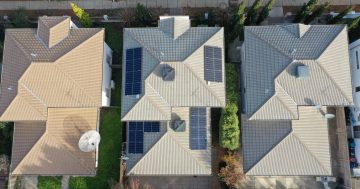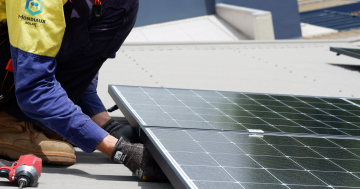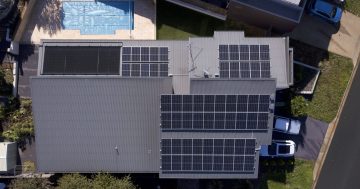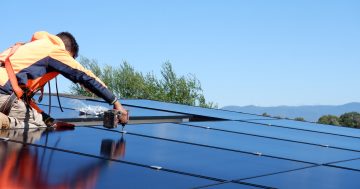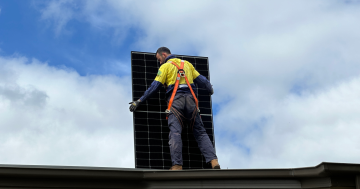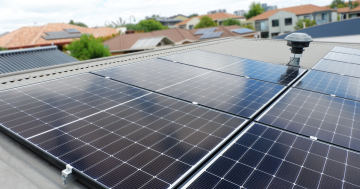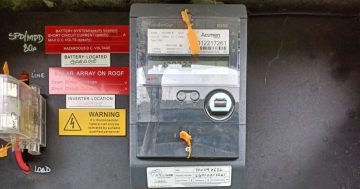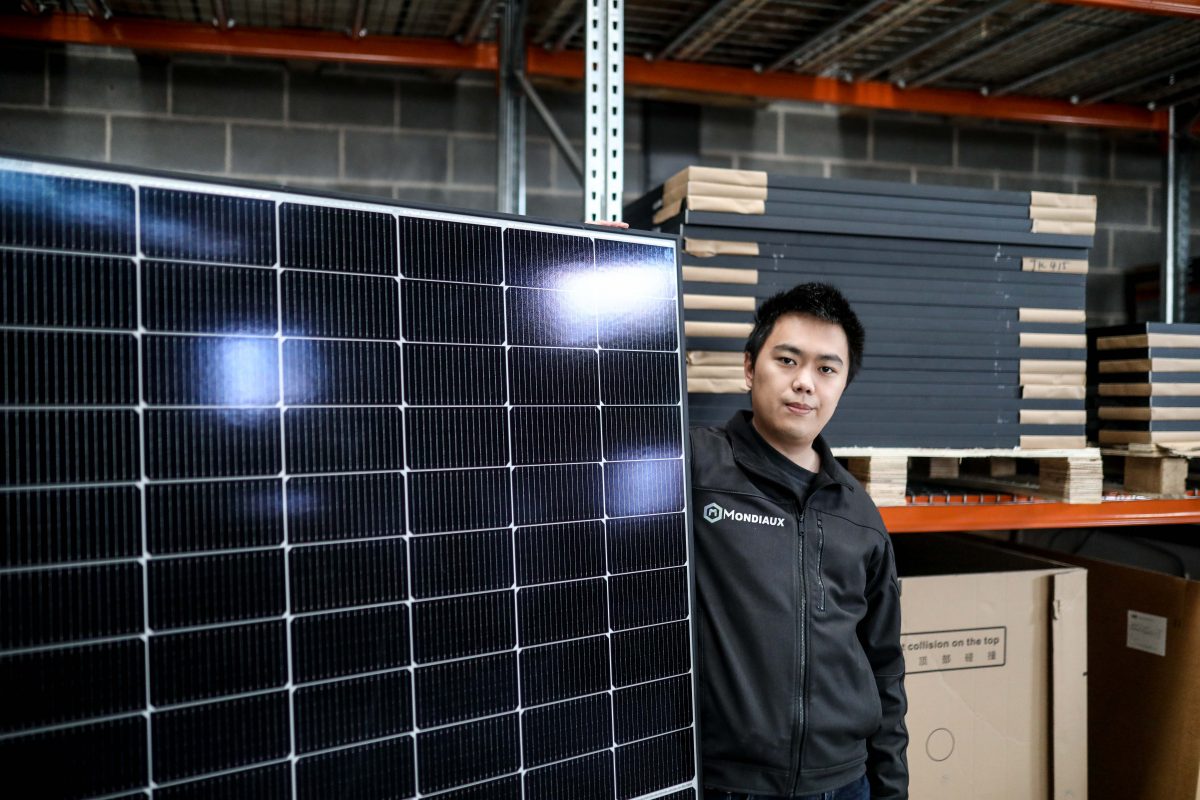
Rain or shine, solar is the way to go according to Mondiaux Solar residential project manager Leo Wang. Photo: Zach Griffith.
Whatever the weather, solar remains the best energy source for Canberrans in terms of the environment and the hip pocket. Canberra winters are a force to be reckoned with. But as long as there’s sunlight, there’s solar power.
It’s a common misconception that solar panels require heat to work. In fact, they convert sunlight into electricity, not heat, says Mondiaux Solar residential project manager Leo Wang.
“They capture radiation from sunlight that hits silicone in the panels,” he says. “The energy of those electrons increases, the energy flows and that forms the electric current.
“So even in Canberra’s cold winters, the technology can work.
“What does impact productivity in winter is the sunlight patterns.”
As daylight hours decrease and the sun’s angle dips lower, production can dwindle to as low as a third of its potential maximum. It still means solar power’s worthwhile in winter, according to Leo.
In summer we unsurprisingly generate more solar energy and consume less, so we export more to the grid to generate a tariff. But Leo says the tariff is one third of the price of buying energy back off the grid to cover shortfalls in the colder seasons.
And so long as solar panels aren’t obscured from sunlight, they can continue to generate energy through the rain, frost and cloudy weather of winter.
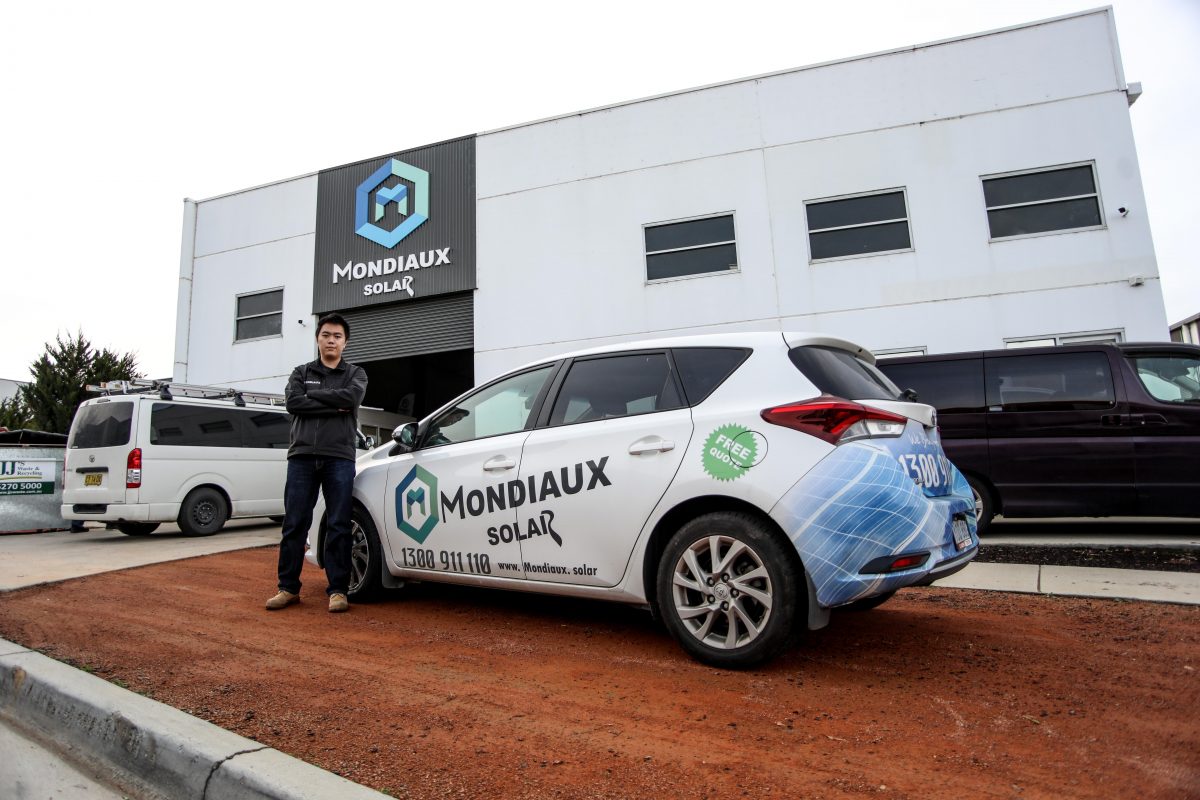
Leo says going solar saves the environment and the hip pocket – even in winter. Photo: Zach Griffith.
Solar panels actually operate more efficiently at lower temperatures.
“We know solar panels work by activating electrons and those energised electrons create electricity,” Leo says.
“The lower the temperature, the easier it is for solar panels to form electric currents. So there’s higher efficiency.”
Whichever way you slice it, solar panels pay dividends that make them advantageous in all seasons – a matter of growing importance amid soaring costs of living.
“We all know energy prices have increased recently,” Leo says.
“Solar is better in terms of reducing carbon emissions and your own energy bills.
“Remember, when installing solar panels, you’re installing a green energy source that lasts 20 to 25 years. We’re not talking about one summer – we’re talking up to 25 [summers].”
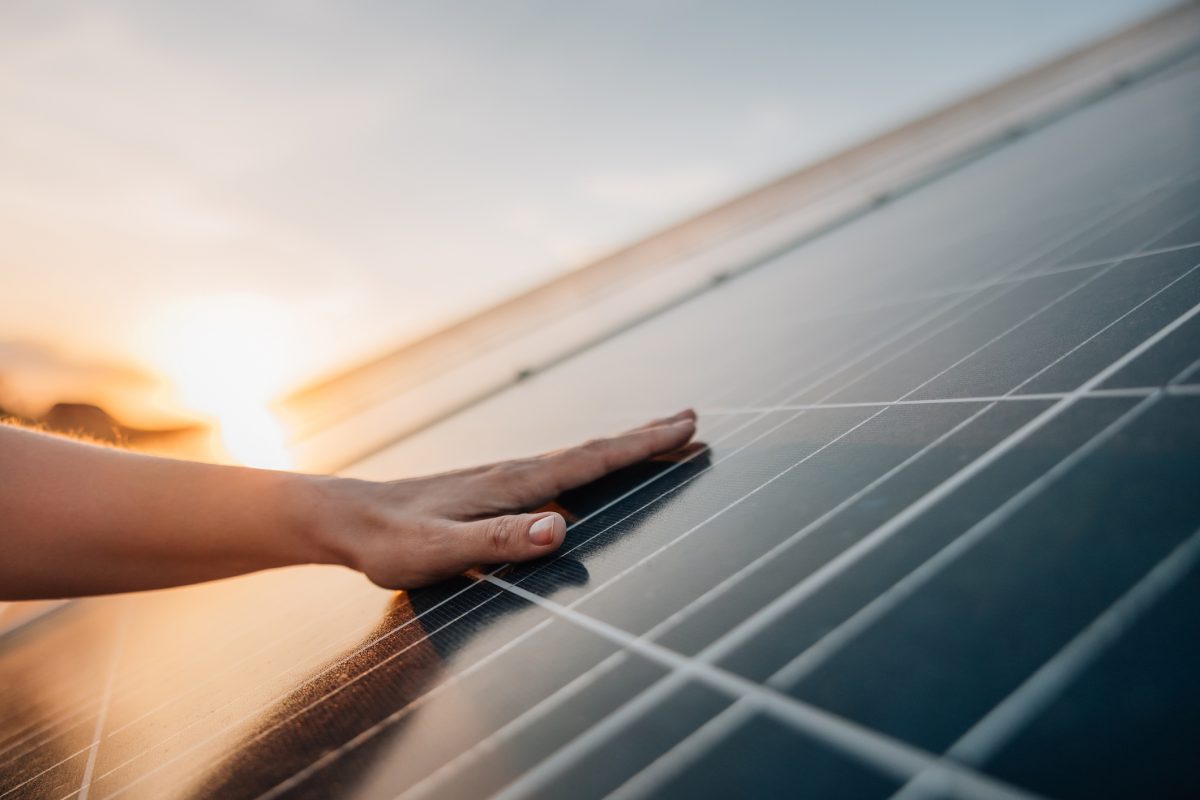
Even with fewer sunlight hours and the sun lower in the sky, solar power is still well worthwhile in winter. Photo: Simon Skafar.
Leo says solar panels are installed within a specific range of gradients to account for the sun’s angle in the nation’s capital – about 30 degrees.
For the solar panel industry, summer is obviously peak season. But as energy costs rise, so can demand for solar energy– and wait times can be extended.
“The wait for installation is much shorter in the colder months, so there’s a definite benefit installing in winter,” Leo says.
“There are multiple benefits to homeowners looking to install this technology, no matter the season.”
Visit the Mondiaux Solar website to find out how you can switch and save the planet and your hip pocket.












